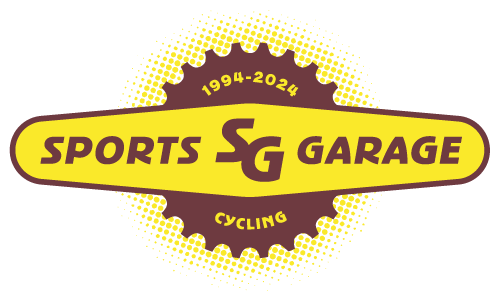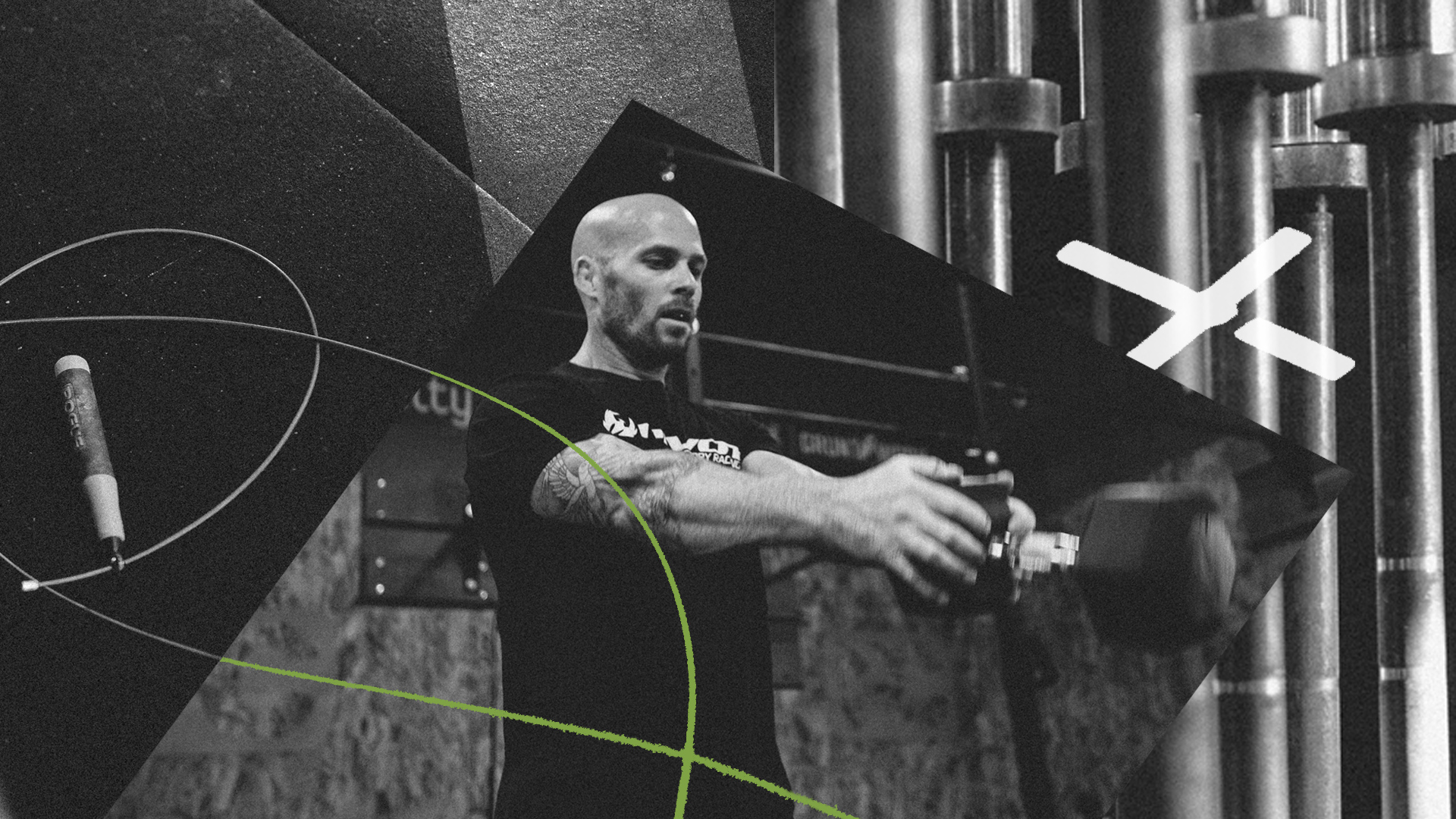

Wondering how a seven-time CrossFit World Games competitor can elevate your time on two wheels?
Chris Spealler, longtime member of the Pivot factory rider family and certified personal trainer, explains how in our exclusive interview. Whether you’re a freeride addict or a competitive cross-country racer, Chris has tips for you.

How does strength training translate to building a strong foundation on the bike?
Ultimately, the better our base of general physical fitness, the more potential we have for success at our specific sport. I get it, I love riding bikes too and there can be a lot of pride in what we do. Hardcore mountain biker, etc. BUT if you have a stronger midline (core), legs, shoulders, and chest, it is going to make you a more capable and durable rider.
You will have more control of the bike and be able to take bigger hits if you’re into freeriding. And most people find the ability to put some serious power to the pedals on punchy or technical climbs greatly improves.
It’s easy to associate “strength training” with “meatheads,” but any professional athlete has a dose of strength training to make them better at their sport. You aren’t any different!
Those interested in your custom training programs should, of course, check you out on SpealProgramming.com. But for those who have never worked with a trainer before—or had a plan specifically to improve their biking—can you explain how you build a program for getting started?
It’s easy to overthink things when it comes to programming. Often, simple is better and creating a template for your week is a huge help.
- Here’s an example program template:
- Monday: Strength Training
- Tuesday: Ride
- Wednesday: Strength/Endurance
- Thursday: Ride
- Friday: Strength Endurance
- Saturday: Long Aerobic Sustained Effort (can be on the bike but it’s nice to change it up too)
- Sunday: Rest
Strength training is largely based around power (slow) lifts, and Olympic (fast) lifts. I like to work on more power lifting for the bulk of our strength training and Olympic lifts if people are interested in them. They are incredibly valuable, but not necessary to build speed or strength, depending on how we lift.
The strength/endurance days are often a mix of movements that complement one another and have a lifting and conditioning element to them. When applied well, these are super valuable and applicable to riding bikes.
Aerobic work can come from bike riding for sure, but it’s great to mix it up with running or rowing. You will notice different heart rates and thresholds you can hold with each of these.
Three to four days of work IN the gym that is under 60 minutes will pay dividends on the trails.
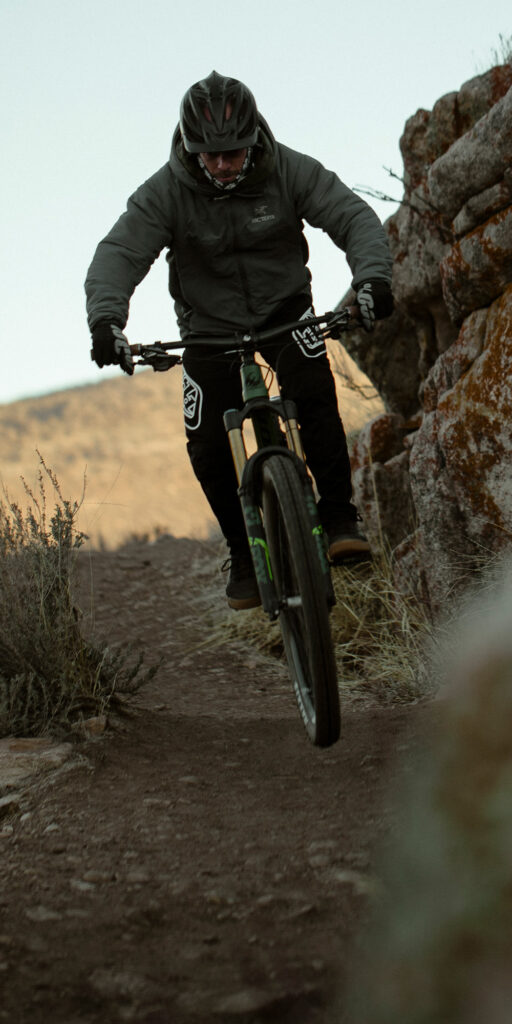
You sometimes talk about “when life happens to CrossFit.” Can you talk about how you’re evolving traditional training plans, and how this helps people?
Fifteen to 20 years ago, we all talked about if CrossFit was a training program we could do for the long haul…20-plus years. We are there now and I want to help answer that question. Age, lifestyle, injuries, throwing kids in the mix, available time, relocating, etc., all play a role in our ability to train. It’s simply not possible to flip the switch and crush ourselves every day. We have to earn the right and be smart to have workouts with intensity (which are valuable with the right frequency).
- I like to look at two things:
- Flow of work throughout the week. This is the total volume AND intensity we are accumulating across the week. Programming workouts that are longer in duration or have more sustained effort approaches are a great way to help find balance for the more intense days to serve their purpose.
- Movement function over simply modifying load, reps, or time. Yes, those are all ways we can adjust programming, but it’s just scratching the surface. Some of us may not be able to perform movements due to limitations, or simply the juice isn’t worth the squeeze so to speak. We can still find value in squatting, pushing, pulling, hinge work, and carries. I like to focus on most demand to least demand on the joints within these categories to help people make the best decisions with their daily training.
How does recovery play into training? What about when you’re in peak mountain bike season, logging your biggest mileage, and climbing weeks of the year?
You will never “recover” your way to performance and gains, but without it you will never get there. The training stimulus is what we do while riding or working out, but the adaptation (where we see the gains) is what happens when we recover. Age, and a number of things on a daily basis, play a role in how much recovery we need.
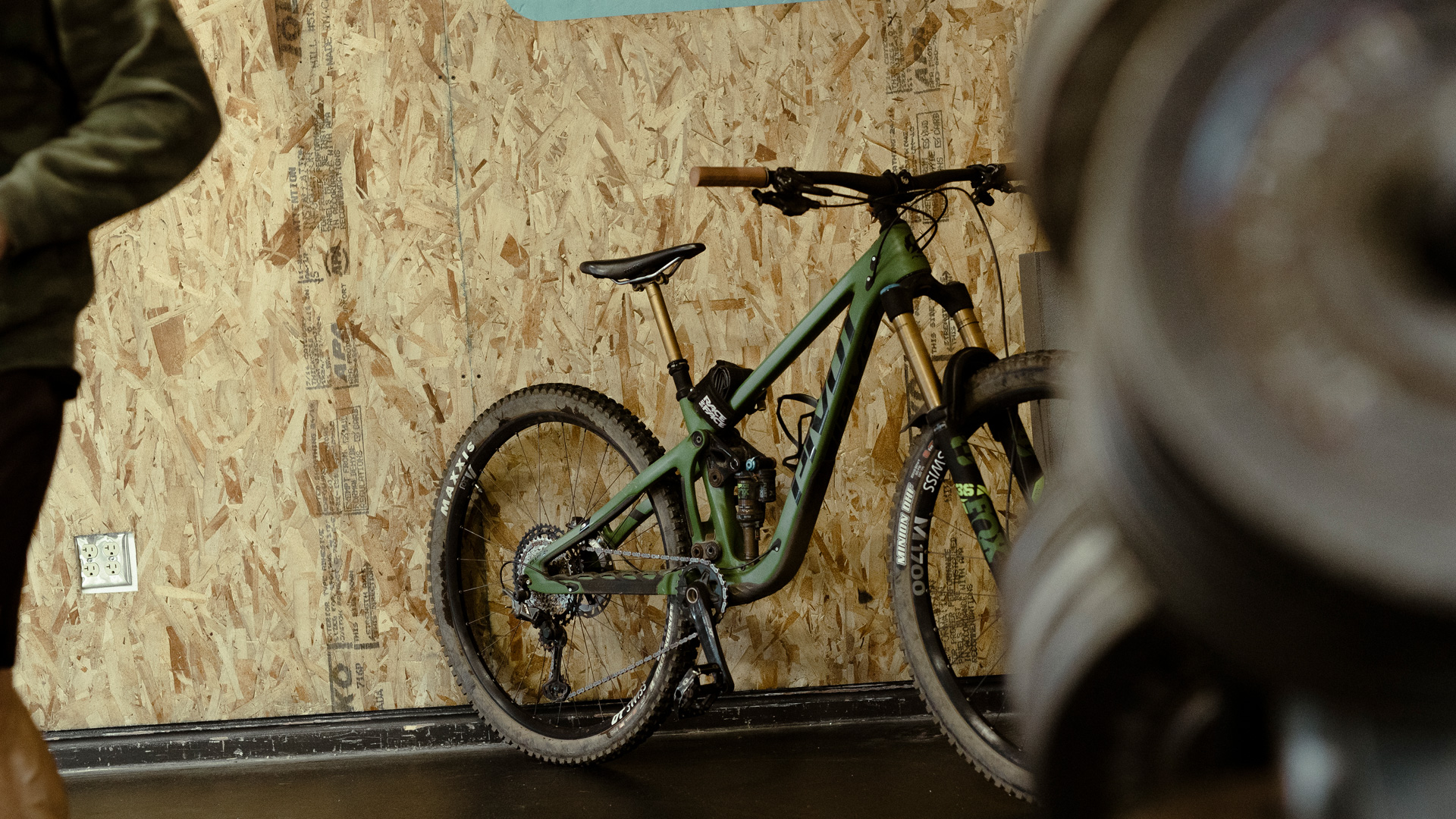
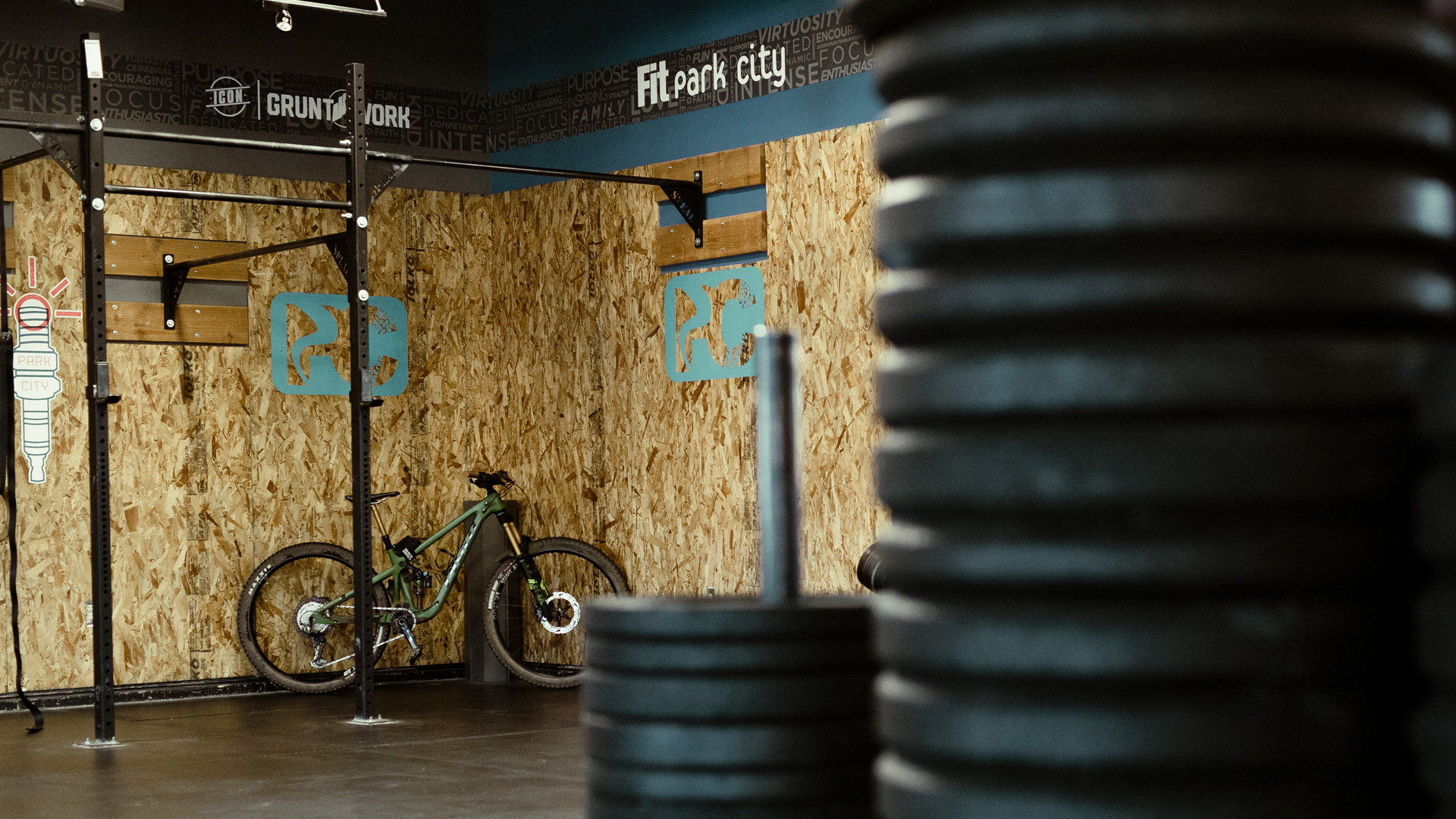
6 Total Markers
Here’s a good approach with some questions to ask yourself if you are wondering how hard to push for the day.
| Sleep quantity | How many hours of sleep did you get last night? Eight-plus hours is a great target to shoot for, but no less than six. |
| Sleep quality | This takes some pressure off the total time, as six hours of great quality may serve you better than eight of tossing and turning through the night. Deep sleep promotes recovery and health. |
| Soreness | There is normal soreness, and “over-the-top” soreness. When we train or introduce a new stimulus, it’s common to have general soreness most days that subsides within 24–48 hours. Anything beyond this that limits range of motion, mobility, or performance means we are likely overdoing it. |
| Mood | Simply, how do you feel today and what kind of workout are you looking to have today? Ready to take on the world? Great! That’s not every day, though. Most are just…normal. What we want to be aware of are those days of lack of energy, lack of motivation, or just down in the dumps. |
| Previous day’s performance | A simple awareness of how we are feeling that week. Don’t be fooled into thinking this is setting a personal best every day. Most days we are just looking to feel motivated, work hard, and be happy with our efforts. If we see a continued trend of lack of energy and motivation, or the inability to push yourself one to two times/week, it should be noted. |
| Immune status | You’re either feeling good or experiencing symptoms such as headaches, nausea, gastrointestinal discomfort, coughing, and sore throat, which may be correlated to training stress and/or fatigue. When these are ignored, training can worsen symptoms. |
How to Use this Info:
If 5–6 markers are good and in a “green light,” feel free to move forward with more intensity if you like.
If 3–4 of the markers are in the green, we suggest proceeding with some wisdom. Look to the less-demanding movements and an intensity that suits you best, so you can feel better leaving the gym or riding than when you started.
If 1–2 of the markers are good, but not the others…you need some recovery. Utilize the recovery options and eliminate intensity so you can focus on simply improving range of motion, increasing blood flow, and setting yourself up for success in the coming days.

You’ve been a passionate mountain biker for decades now. How do you prevent burnout and keep your love for the sport alive?
I hate it when people say “the secret is…”—I pretty much never pay attention to anything they say if they open their “pitch” with that. But the secret? It’s not my avenue for improving fitness.
When I go for a ride, I do it because I legitimately love it. I don’t care if some bro in spandex passes me on a climb, tells me I’m “cheating” because I’m out on the eMTB for a change, or if the guy in the flannel and oversized glasses doesn’t think I’m “enduro” enough. I ride my bike because I love the feeling I get from it. Mostly downhill and jumps! My fitness gains are made in the gym with smart, productive work that is under 60 minutes a day and 5 days/week.
This leaves PLENTY of room for me to enjoy riding since it’s simply icing on the cake. Check your ego, ride for the enjoyment of it, not the pressure of Strava or others’ perceptions.
To learn more about Chris and his offerings at Speal Programming, find him online. You can also learn about his take on parenting and raising adventurous, bike-loving kids on PivotCycles.com.
